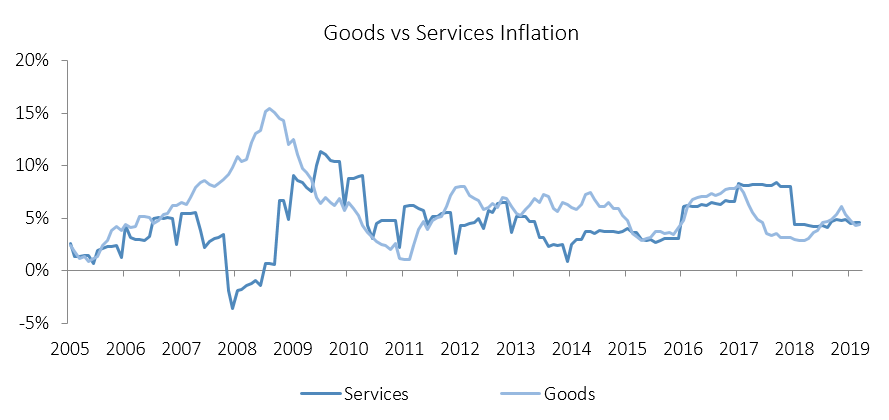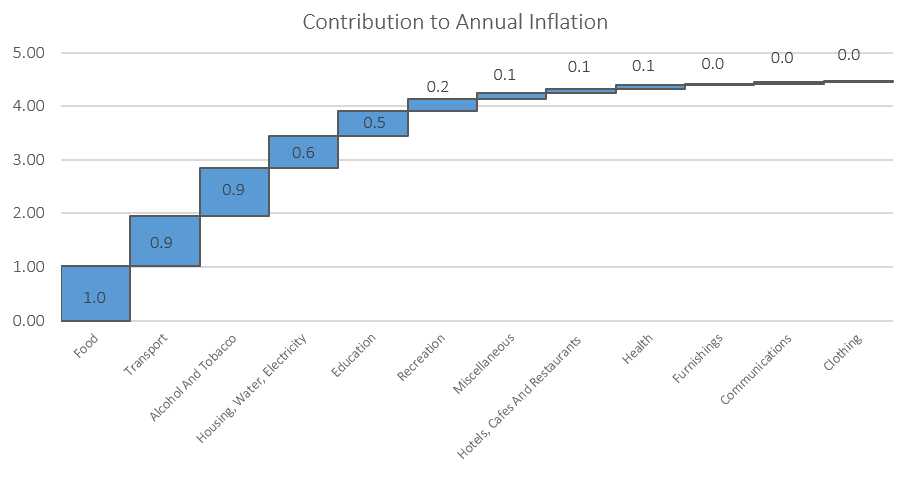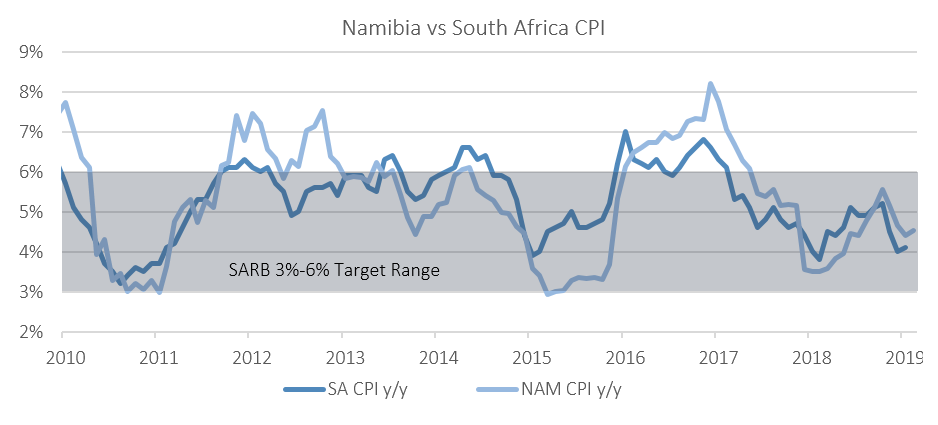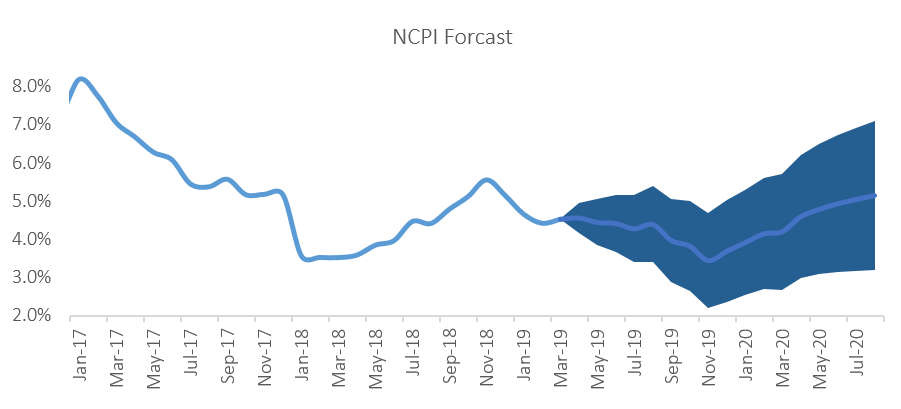The Namibian annual inflation rate edged up to 4.5% y/y in March, after moderating to 4.4% y/y in February. Prices in the overall NCPI basket increased by 0.2% on a monthly basis in March, following deflation of 0.1% m/m in February. On an annual basis, prices in five of the twelve basket categories rose at a quicker rate in March than in February. One category remained unchanged, while the rate of price increases in six categories slowed for the month of March. Prices for goods increased at a rate of 4.4% y/y in March, while prices for services increased by 4.6% y/y.
Food & non-alcoholic beverages, the second largest basket item by weighting, continued to be the largest contributor to annual inflation, accounting for 1.0% of the 4.5% annual inflation rate. Prices in this category were unchanged on a month-on-month basis, but rose by 5.8% y/y. Prices in all thirteen sub-categories recorded increases on a year-on-year basis, with the largest increases being observed in the prices of vegetables, fruits and bread and cereals. The increase on an annual basis, is likely a result of increased transport prices towards the end of last year which has filtered through to food prices, coupled with poor rainfall during Namibia’s rainy season that affects local food production.
Transport, the third largest basket item, was the second largest contributor to annual inflation, accounting for 0.9% of the total 4.5% annual inflation figure. Transport prices fell by 0.3% m/m in March, but increased by 6.9% y/y. The purchase of vehicles subcategory saw price decreases of 0.8% m/m, but an increase of 4.2% y/y. Oil prices have steadily been picking up since the beginning of the year, reaching US$68 per barrel at the end of March. The Ministry of Mines and Energy once again decided to keep fuel pump prices unchanged for the month, stating that the government will finance the under-recoveries.
The alcoholic beverages and tobacco category recorded price increases of 0.9% m/m and 6.7% y/y, an increase over the figures seen in the prior month. Prices of alcoholic beverages increased at a rate of 6.9% y/y, while tobacco prices increased at a rate of 6.3% y/y.
The Namibian annual inflation rate of 4.5% y/y continues to trend somewhat higher than that of neighbouring South Africa (February: 4.1% y/y). The poor rainfall Namibia experienced during the rainy season affects local food production and will likely lead to higher food inflation going forward, as the shortfall will lead to an increase imports. Oil prices have also been climbing steadily since the beginning of the year, and while the government has managed to finance the under-recoveries up until now, we expect fuel prices to increase at some point in the coming months.
The Bank of Namibia (BoN) has decided to maintain the Repo rate at 6.75% at its MPC meeting last week, following a review of global, regional and domestic economic and financial developments. The BoN expects inflation to average 4.7% in 2019. IJG’s inflation model forecasts average inflation of 4.3% in 2019. However, oil prices and subsequent transport inflation poses the largest upside risk to this forecast.





